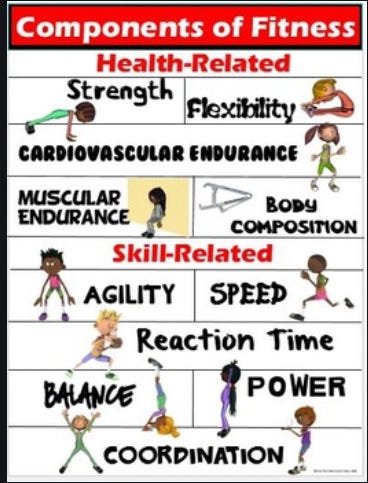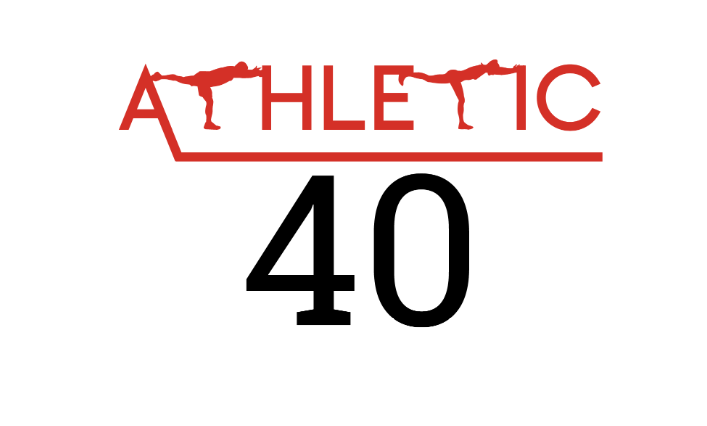The Physical Movement, Your Best Self: The 3 Major Adjustments in My Core Training and Prescription in the Last 20 years
Core training when I was younger was referred to as working the abdominal muscles, Very specific. Things have changed.
Core training when I was younger was referred to as working the abdominal muscles, also known as the abs. It came from the body building world. Very muscle specific. Prior to that it was simply referred to doing sit ups.
In my youth sit ups were part of the annual fitness test in school. How many sit ups could you do in a 1 minute with someone holding your feet?
In my 20s and most of my 30’s, even though I was very active, core training was not part of my routine. Occasionally I did crunches, as those were considered an evolution from the traditional sit up.
At 37, that all changed.
A herniated disk, caused partially by a weak core, presented the option of physio + strengthen or surgery. I chose the former. I was going to do everything I could to not experience that kind of pain again.
Adjustment 1 in my core training: it became a staple of my daily routine in the 20 years since. Perhaps that injury became a blessing in disguise?
Core training became an essential part of making sure my quality of life stayed high. 20 years later, I can proudly say that my core has never been stronger.
If you have ever had nerve pain or any kind of disk issue in your back or neck, you know what I am talking about, it is debilitating. You lose all ability to move independently. Getting up and down from bed or the toilet becomes all consuming and requires tremendous effort and energy. As a result of the injury and the pain, I moved like I was 95 years old.
Staying strong as we age has less to do with aesthetics as much as it is keeping that quality of life we want.
The ability and privilege to move.
Get to the car, in and out.
Play with the kids, do work around the house or yard.
Have energy at the end of the day. Core training is a massive part of keeping that ability and independence.
Core training into my 40’s and now into my 50’s has become the foundation for everything that I do. When neglected I get not so gentle reminders from my body that I can not afford to do that.
This also applies to the prescriptions of exercise I provide clients, regardless of age. I offer different ways of working the core to meet the demands of their life and /or sport.
Appropriate doses in consistent frequency.
Adjustment 2 in my core training: evolved definition of core training. No longer just “sit ups” or working your “abs”, the core is more accurately the mid-region of the body. Not just abdominal muscles, but also the area around lower back, hips and pelvis.

Photo by JOSHUA COLEMAN on Unsplash
Personally, I integrate gluteus muscles into the core training routine. Strong core & glutes mean that we can move well at different speeds, in different directions. A strong core means we can lift objects while reducing risk of injury. A strong core improves our ability to move and reduces our chance of injury. A strong core allows us to meet and surpass the demands of our lifestyle.

Photo by Hưng Nguyễn Việt on Unsplash
An elite athlete will need different dose and frequency of core training than a regular person with a desk job. A health care provider, first responder or anyone on their feet all day will require a different dose than an elite athlete. Core training needs to mirror the demands of our lifestyle. This is where many run into trouble. Often the training does not match the demands of the work or lifestyle.

Photo by Nicholas Bartos on Unsplash
Exercise and training in general have so many variables. Many of the more subtle variables get overlooked or misunderstood.
One size fits all does not apply when it comes to exercise prescription.
There are commonalities that apply to all for sure. Strength training 2–3 times per week is one. Getting some continuous activity in at least 1x per week is another (minimum 30 minutes of walking, or cycling or swimming or something that is continuous) and stressing your anaerobic system at least 1x per week is another via interval training. This is common to all, but the magic lies within the specifics and the execution.
The core strengthening execution must be progressive.
The execution must build up the core and not wear it down.
The execution requires something be done every day. Even in micro doses. Consistency is the most important aspect of building your body as you get older.
When applied to core training, exercises can be performed that can be progressed (made harder) and regressed (made easier). As we get holder, holding movements (isometric) is a great way to work the core without the risk of movement that the body is not ready for.
For example, a crunch with a twist was accepted for a long time as an acceptable way to work the core. I guess it still does work the core, but it is definitely high risk to integrate the rotation when not used to it.
Simple (not easy) staples have become Plank and side plank, Bird dog, dead bug, bear crawl variations, push up variations (tough on the core), leg raise variations, modified crunches, pallof press variations, as well as some chops.
Plank & progressions 30s per day = keeping movement quality good.
Side Planks & Blank in daily doses will make a massive difference in our ability to move. 20 to 30s is all it takes.
Hand Walks are simple and effective.
Core becomes a consideration in other exercises as well. One of the main “.other exercise” that works core as well as many other things are weighted carries. (Suitcase carries, farmers walks and waiters walks). 1 arm presses and combination moves like lunges & press tax the core. These would be secondary core exercises.
Farmer Walks involves lifting something heavy from here to there. Don’t need fancy equipment,
A simple dumbbell press integrates core when simply using 1 arm at a a time.
Overall, core training has changed not just for myself and clients over the last 20 years, but also in the industry in general.
Adjustment #3 is that core training has moved from part of the health related component of fitness only (muscle strength and endurance and body composition) to also be part of the execution and development of the skill components of fitness as well. Core strength is integral in good reaction time, speed, power, agility, coordination and balance.
Core strength is integral in good reaction time, speed, power, agility, coordination and balance. In short, if you want to keep moving, then your core needs to be strong.

Finding a daily routine with a few minutes on core will be one the best investments in yourself you can make !
Greg Lawlor is the creator of Athleticover40.com. a resource for those who want to stay strong and move well as we age.




